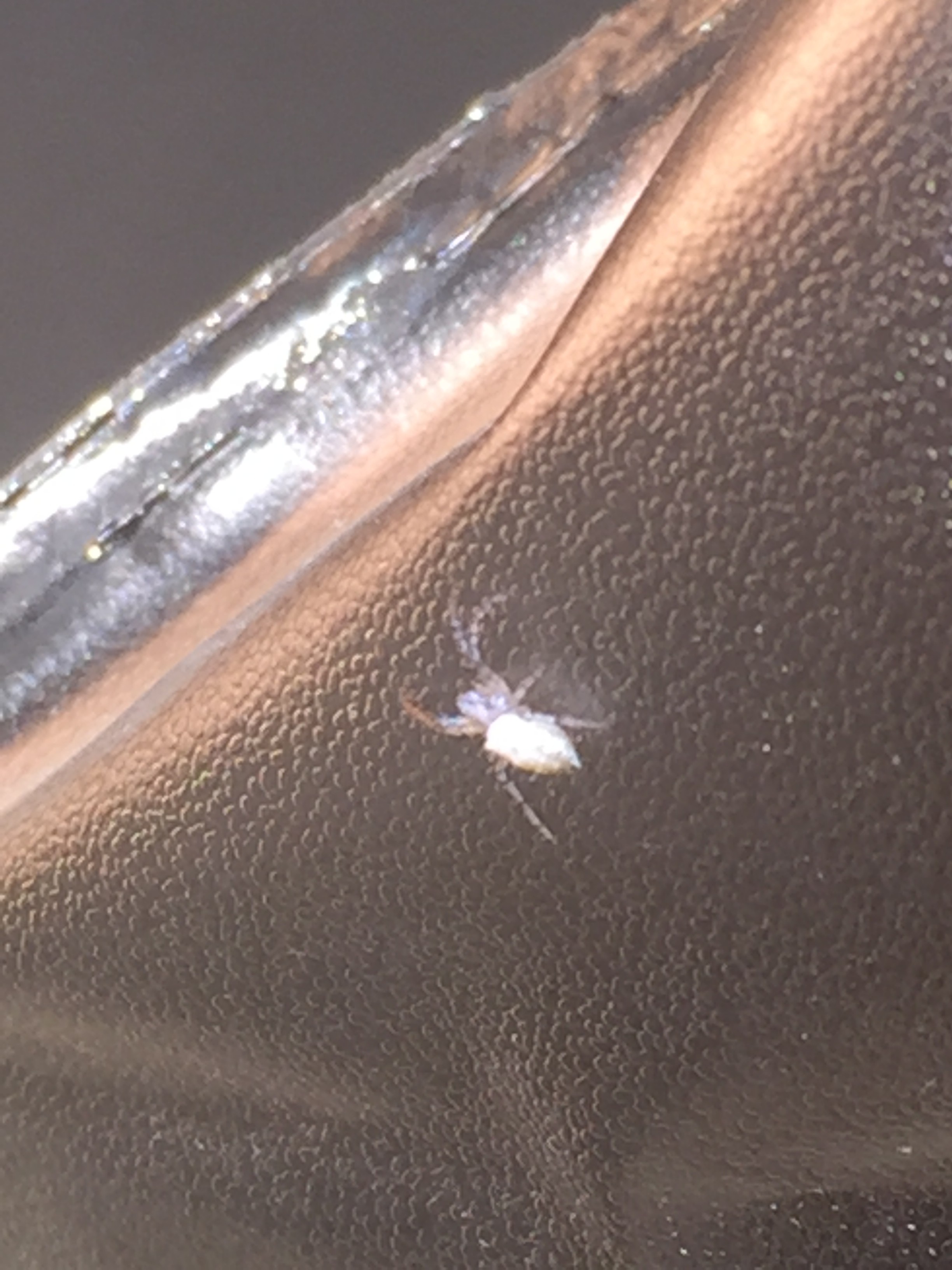Banana spiders, also known as Argiope aurantia or garden spiders, are striking creatures that often capture our attention with their size and vibrant colors. Encountering one of these spiders in your garden can be a memorable experience, sparking curiosity and perhaps a bit of awe. As impressive as they are in their natural habitat, the question arises: Can You Keep A Banana Spider As A Pet? Let’s explore the reality of these fascinating arachnids and whether they are suitable for home enclosures.
A tiny banana spider spiderling, approximately 1mm in size.
Understanding the Banana Spider: More Than Just a Big Spider
The term “banana spider” is a common name that can refer to several large, yellow-colored spiders, but in North America, it frequently points to Argiope aurantia. These orb-weaver spiders are easily recognizable by their bright yellow and black markings on their abdomen, and the impressive, intricate webs they construct in gardens, fields, and wooded areas. Female banana spiders are significantly larger than males, which are much smaller and less noticeable. The large size of the females, sometimes reaching up to an inch in body length with a leg span of several inches, is part of what makes them so captivating.
The Life Cycle of a Banana Spider: From Tiny Spiderling to Garden Giant
Witnessing a fully grown banana spider in late summer or early fall means you’re observing a survivor. These spiders hatch from egg sacs, often containing hundreds of eggs, produced the previous year. The high number of offspring is nature’s way of ensuring survival, as many spiderlings face numerous dangers, from predators to environmental challenges.
A banana spider egg sac, showcasing the protective casing for developing spiderlings.
Spiderlings emerge in spring and begin their growth journey. Juvenile banana spiders might look quite different from their adult counterparts, sometimes displaying silver or greenish hues. As they grow, they molt, shedding their exoskeletons to accommodate their increasing size, eventually reaching their mature, striking adult form by late summer. The “zipper” or disc-like structure in the center of their web, known as the stabilimentum, is another fascinating feature that changes as the spider matures.
A juvenile banana spider, displaying different coloration compared to adults.
Banana Spider Behavior: Understanding Their Role in the Ecosystem
Banana spiders are beneficial members of the ecosystem. They are predators that primarily feed on insects they catch in their webs, helping to control garden pests. Their large orb webs are not just impressive constructions but also effective traps for flying insects. Despite their size, banana spiders are not aggressive and are more inclined to flee than bite when disturbed. Their bite is considered no more harmful than a bee sting, and they are not considered dangerous to humans.
So, Can You Keep a Banana Spider as a Pet? Considerations for Spider Enthusiasts
While the allure of keeping such a magnificent spider as a pet is understandable, there are several factors to consider. Banana spiders are wild creatures with specific needs that are best met in their natural environment.
Ethical Considerations: Removing a banana spider from its natural habitat disrupts the local ecosystem and deprives the spider of its freedom to fulfill its natural life cycle, including mating and contributing to future generations.
Lifespan and Care: Adult banana spiders have a relatively short lifespan, typically living for only one season. Keeping an adult spider as a pet would only offer a limited period of observation. Furthermore, replicating their natural environment and diet in captivity can be challenging. They require live insects for food and a spacious area to build their large webs, which is difficult to provide in a typical home setting.
Observation vs. Captivity: The joy of banana spiders often comes from observing them in their natural gardens and yards. Creating a mini-habitat in your garden to attract and observe these spiders can be a much more rewarding and ethical approach than trying to keep them confined as pets.
A detailed view of a banana spider’s vibrant yellow and black markings.
Conclusion: Appreciating Banana Spiders in the Wild
In conclusion, while it might be tempting to keep a banana spider as a pet due to their striking appearance, it is generally not recommended or ethical. These spiders are best admired and appreciated in their natural environment where they play a vital role in the ecosystem. Instead of captivity, consider creating a garden that attracts these beautiful creatures and enjoy the wonder of observing them in their natural webs as part of your backyard wildlife. Their presence is a sign of a healthy garden ecosystem, and observing them from a respectful distance is a much more fulfilling experience.

